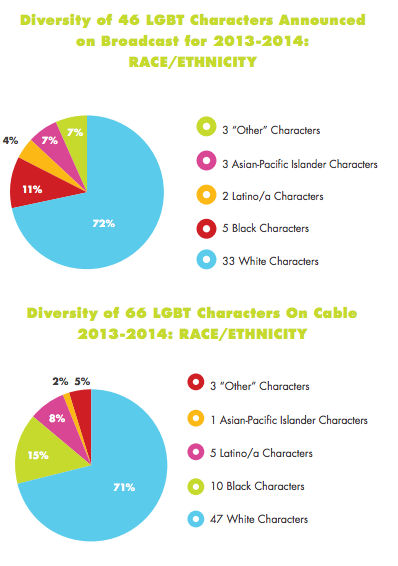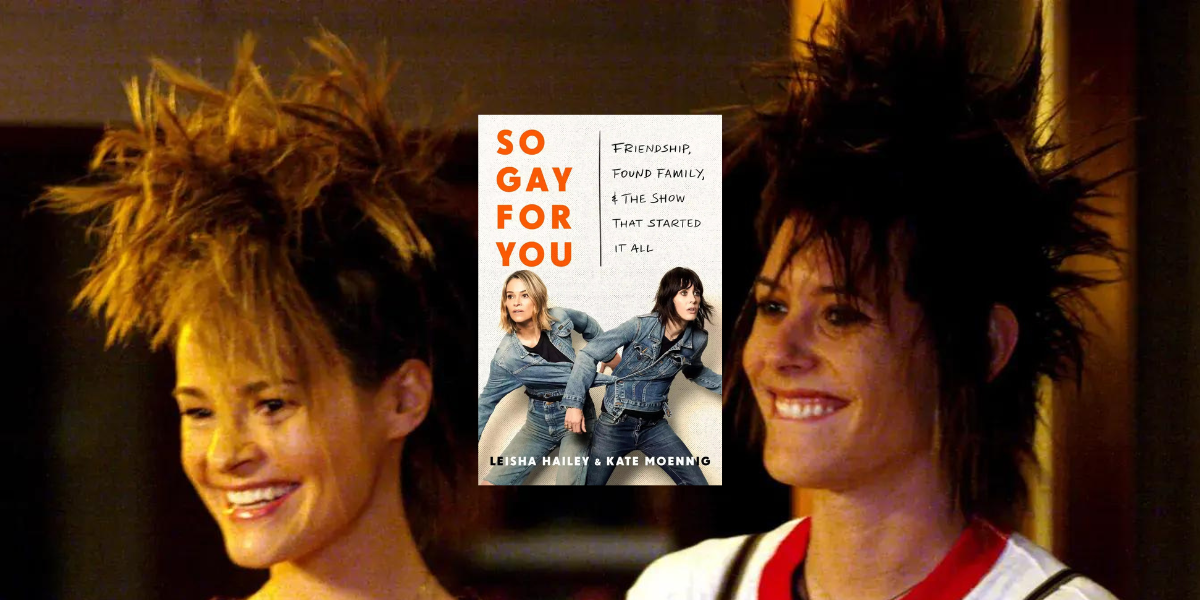It’s been ten years since The L Word premiered, and we’ve got lots to talk about. Welcome to The L Word week!
Colombian native and Modern Family star Sofia Vergara made $30 million last year, making her the highest-earning actress on TV. Oh yay, a Latina making more money than a white person! However, it’s not much of a triumph when you realize Vergara only finds success on the coattails of the broad, generalized ideas of Latin@ Folks that have been perpetuated by racism and sexism throughout the history of American media. She is a prime example of what Hollywood wants in a Latina character: voluptuous body, luscious dark hair, and a loud personality with a thick accent. Maybe that’s why she is so desired in the media world; along with her acting career, she has numerous — mostly bilingual — endorsement and commercial deals that contribute to her huge salary.
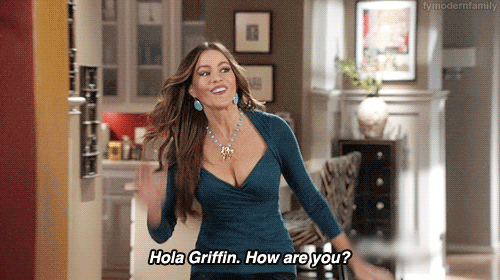
For years, the media has regurgitated the same stereotypical portrayals of Latinas. They rarely play anything that isn’t a maid/nanny/domestic help, an immigrant, a criminal or a sultry lover. So when The L Word debuted not one lesbian Latina character but two lesbian Latina characters throughout its run on Showtime, Latinas everywhere should’ve rejoiced for these unprecedented roles, right? Nope. Nope. Nope.
The truth is Carmen and Papi are Latina characters who continue to perpetuate sweeping generalizations about Latin@ Folks in the media and even created more damage for queer Latin@ Folks. Yes, you drooled over Carmen and laughed at Papi’s ridiculousness, but I’m here to tell you why these two characters are an insult to Latin@ Folks. Let’s explore how and why these characters were problematic.

Ok, sit down, I need to tell you something important. This may come as a shock to you — because believe me I was baffled, straight-up blindsided, because I didn’t know this till now — that Sarah Shahi, who plays Carmen, and Janina Gavankar, who plays Papi, are not Latina. Shahi is from Texas and apparently Iranian royalty from her father’s side and part Spanish from her mother’s side. Gavankar is from Illinois and is part Indian and part Dutch. In 2004 when the L Word first premiered, there were more than 40 million Latinos living in the United States (which has increased by 10 million today) yet Ilene fucking Chaiken could not find two Latinas to be in her show. If you’re filming a show based on a group of lesbians who live in LA — which half of its population is Latino — there is absolutely no excuse not to incorporate Latinas into the show.
This of course isn’t the actresses’ fault. Shahi and Gavankar are women of color who have to compete with white women for acting gigs that are so often tailored for white women. More doors are open for Shahi and Gavankar when they can be “racially ambiguous” and play any woman of color, and they deserve all the work they can get. So playing Latinas are not their fault, it’s Hollywood’s fault. The white, male-dominated TV and film industry think being brown is all the same. To them, here’s no difference between being Dominican and Mexican or being Puerto Rican and Cuban. All you have to do is slap on an accent, throw around a few words like “quinceañera” or “mofongo,” add some Latin beats in the background and now no one can tell the difference. This reduces unique cultural identities to what white people perceive them to be and creates stereotypes.
So we’re off to a bad start already and we haven’t even talked about the characters.

Exhibit A: Carmen de la Pica Morales
Saucy. Fiery. Hot. Spicy. I’m not describing the delicious salsa roja I made for my breakfast tacos this weekend. These adjectives are repeatedly used to describe Latinas in the media. Never: intelligent, confident, ambitious, creative, etc. These words that reduce Latinas to their bodies and sexuality is deeply rooted in a history of white people exoticizing and sexualizing women of color. Scholars Isabel Molina Guzmán and Angharad N. Valdivia explain in their research of Latinidad in U.S. pop culture, the parallel between whiteness and non-whiteness vs. intellectual function and nature.
“For centuries the bodies of women of color, specifically their genitals and buttocks, have been excessively sexualized and exoticized by U.S. and European cultures (Gilman, 1985). Not surprisingly popular images of Latinas and the Latina body focus primarily on the area below the navel, an urbane corporeal site with sexualized overdetermination (Desmond, 1997). Within the Eurocentric mind/body binary, culture is signified by the higher intellectual functions of the mindibrain while nature is signified by the lower biological functions of the body. That is, Whiteness is associated with a disembodied intellectual tradition free from the everyday desires of the body, and non-Whiteness is associated with nature and the everyday needs of the body to consume food, excrete waste, and reproduce sexually. Dominant representations of Latinas and African American women are predominately characterized by an emphasis on the breasts, hips, and buttocks. These body parts function as mixed signifiers of sexual desire and fertility as well as bodily waste and racial contamination. Contemporary Latina iconicity inherits traces of this dichotomous representational terrain.”
Latinas and Latina characters bodies are so often “othered,” it’s their marginalization that sexualizes them. Modern day evidence of this is demonstrated by the “sexy” roles that Salma Hayek, Zoe Saldana, Jennifer Lopez, Eva Longoria, Rosario Dawson, Eva Mendez, even Michelle Rodriguez play on screen.
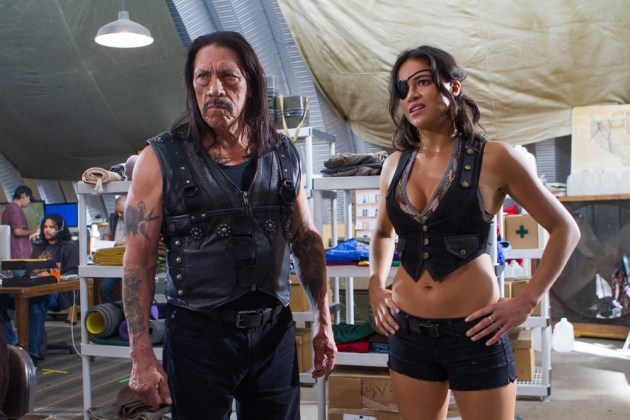
Carmen’s character is no exception. Carmen was introduced in the second season as the super hot DJ whom Shane instantly had an attraction to, or at least fucked right away. Even though Carmen went out with Jenny for a while (I know, we all forget that happened), she only existed to be Shane’s sexy lover.

“But Yvonne, The L Word is all about sex, so it’s ok that we revel in Carmen’s hotness.”
There’s nothing wrong with being a beautiful, sexy, curvy Latina; the problem is that it seems that these were the main attributes found in the only Latina character on the show during those seasons. When Latinas’ bodies are continually objectified, on top of their culture that is already sexually oppressive, they are robbed of their sexual agency, reduced to nothing more than a body to be desired.
Carmen was a supporting character to Shane’s character arc, so of course Carmen’s not going to get a complex back-story of her own. But even when we get glimpses of Carmen’s life besides her “working” aka dancing with one hand on her headphones behind a DJ turntable, it is a white-washed portrayal of a Mexican-American. From her horrendous Spanish-speaking skills (Carmen had a Spanish-speaking mother, her Spanish should’ve been better than that!) to that sorry-ass quinceañera they went to, Carmen’s culture was not accurately represented.
Carmen’s mom is probably the most real Latina representation in The L Word. This scene is pretty realistic; unfortunately, I’m pretty sure lots of conservative Latina moms have said this to their lesbian daughters: “A whore is better than a lesbian.”
Once Shane left Carmen at the altar, there was no need for Carmen, her character arc ended when her relationship with Shane ended. (However, the arc also had to end because Sarah Shahi wanted to leave the show for other opportunities.)
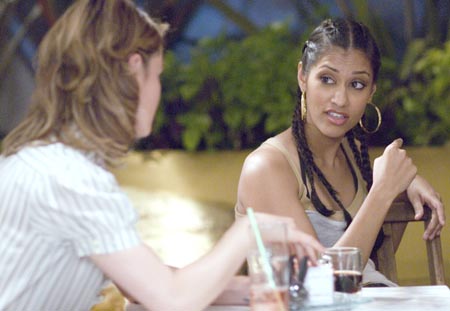
Exhibit B: Papi
Without a Latina character on the show, I guess Ilene fucking Chaiken realized there was a glaring role missing on a show set in LA, so to compensate she incorporated one giant Latino caricature.
Papi was introduced in Season Four as the limo driver who slept with the most women according to Alice’s chart. Papi (meaning “daddy” in Spanish) is a womanizer, an irresistible lady charmer that says things like, “I can make a woman come just by kissing her.” Papi is just a lesbian version of what Latino actors have been typecast as for almost a century: the Latin Lover.
Institutionalized by actor Rudolph Valentino in the 1921 film The Four Horsemen of the Apocalypse, the Latin Lover archetype is just another product of eroticizing and sexualizing Latinos. The Latin Lover is usually a muscular, handsome, seductive, suave man — basically just think of almost every role Antonio Banderas has ever played, including Puss in Boots.
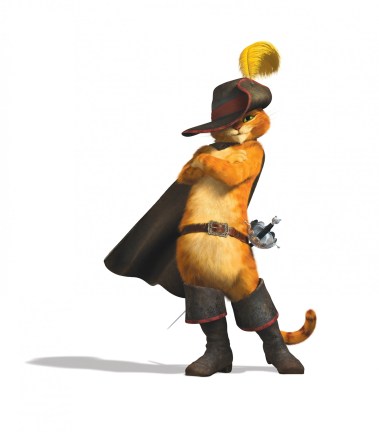
But the Latin Lover’s most prominent characteristic is his “primal sexuality” — most noticeable when juxtaposed next to the white lady he’s trying to mack on. In Latino Images in Film: Stereotypes, Subversion and Resistance, Charles Ramirez Berg explains how Valentino established this stereotype and its role.
“Valentino’s smoldering presence in these films created a basis for the Latin lover as the possessor of a primal sexuality that made him capable of making a sensuous but dangerous — and clearly non-WASP — brand of love…In these roles, the actors haplessly reiterate the erotic combination of characteristics instituted by Valentino: eroticism, exoticism, tenderness tinged with violence and danger, all adding up to the promise that, sexually, things could very well get out of control.”
And this is exactly a summation of Papi’s character. We see this reflected in her very first appearance on the show when meeting Alice for the first time. After having dinner and talking for a while, Alice and Papi have sex.
Okay, I feel Alice was a pretty experienced sexual person, but Papi comes along and goes down on her and suddenly Alice is having this uhhh-mazing sex? No. This is just Hollywood writers playing into the Latin Lover stereotype. Papi’s only role in this scene is to help find a white woman’s “unbridled sexual desires,” to have carnal passionate sex and overall please a white woman.
On top of her Latin Lover identity, Papi was made into a glamorized chola stereotype, characterized by her fake East LA accent, her street-wise attitude, her signature braids and hoop earrings. I don’t doubt there are chola lesbianas in East LA but Papi’s character didn’t depict an actual chola. She hung out with white, wealthy lesbians for crying out loud! This all goes back to Latinos playing the same roles on screen; in this case, chol@s are often associated with being criminals and gang members.
Overall, Papi’s character is as offensive as white sorority girls throwing a fiesta-themed party complete with sombreros and fake mustaches. Papi is an over exaggeration of the most often used stereotypes, the Latin Lover and an East LA chola. Papi was never meant to be more than just a ridiculous character to laugh at. Every time Papi walks into a room Latin music starts to play? The music doesn’t make her any more or less Latina. Papi can like country music and still be a god damn Latina.
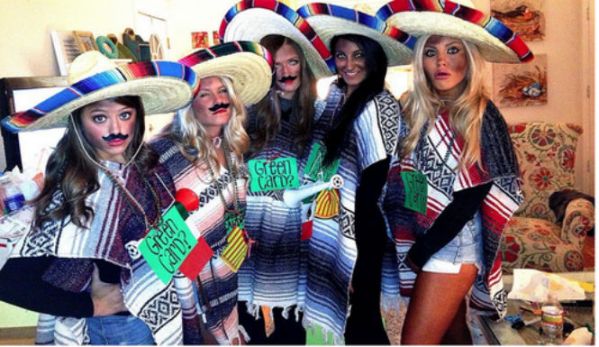
Carmen and Papi’s roles were dismal, just like the current situation of Latino representation on TV. In GLAAD’s “Where Are We In TV” recent report, only 5 percent of broadcast series regular characters are Hispanic or Latino, but 16.3 percent of Americans are of Hispanic or Latino origin, making Latinos “one of the most underrepresented ethnic populations in American media.” As you can imagine from that stat, there aren’t that many LGBT Latin@ Folks depicted on TV. According to GLAAD’s report, there were only two LGBT Latinos on broadcast TV and five on cable in 2013-2014. Only seven queer Latinos out there to represent the multi-faceted brown rainbow. Aye, no.
Why is this particularly horrible? Because according to the National Hispanic Media Coalition’s most recent national poll, non-Latinos learn about our culture from TV, so that means they know NOTHING about us. NOTHING.
“In other words, television has a large role to play in building an understanding that Latinos are an integral part of the American fabric. For this reason I urge the networks to continue striving for greater inclusion until television starts to look more like the actual U.S. demography, and networks must staff more Latinos in back of camera to achieve balanced and accurate portrayals,” NHMC President Alex Nogales said in the GLAAD report.
So you see, the kinds of Latin@ characters we see on screen impact the way we perceive actual humans in the real world. Carmen and Papi’s characters had a chance to really shine and break the mold of Latina stereotypes on TV but instead were so disappointing. Latinos are a fucking diverse group of people with a whole range of skin colors, hair types, body types, backgrounds and cultural experiences. If people see the same tired stereotypes, it erases and homogenizes the vast experiences of Latin@ Folks, giving the public watered-down characters with the same story lines.
What I want to see on screen are honest, queer Latin@ depictions, like Aurora Guerrero’s Mosquita y Mari, which happens to be set in East LA.
This is just one example, but these kind of portrayals of Latin@ Folks are real and speak for the communities they represent.
With 50 million Latinos living in the United States — all with an array of stories to tell — there’s no shortage of inspiration for authentic characters on TV and film.





